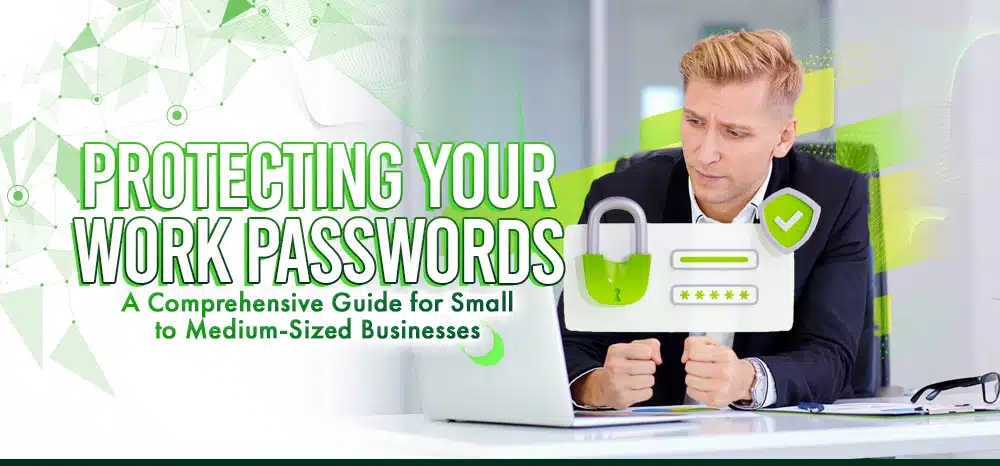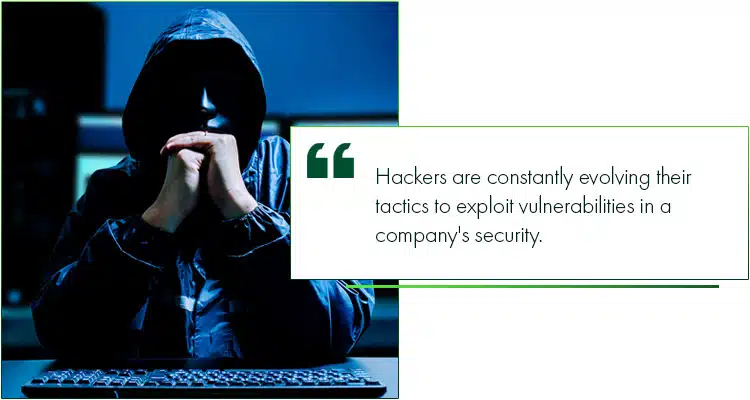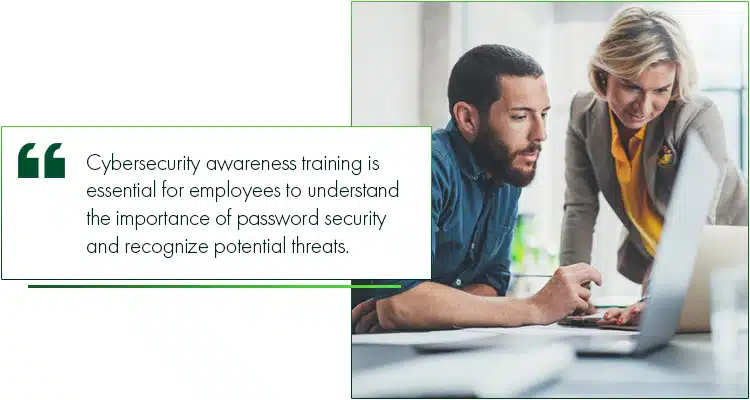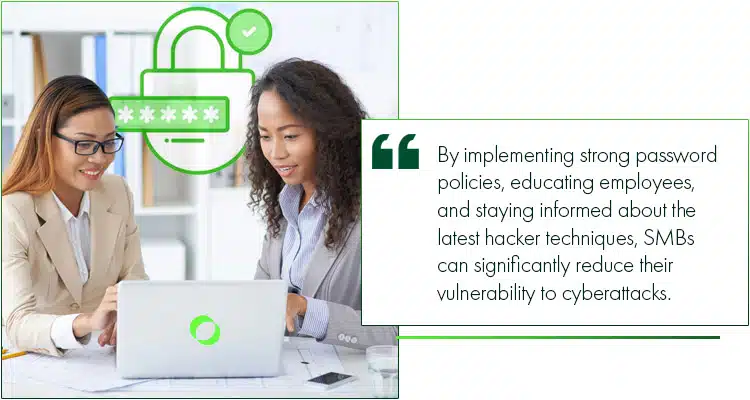The security of work passwords is paramount for businesses of all sizes. Small to medium-sized businesses (SMBs), in particular, face unique challenges in safeguarding their digital assets due to limited resources and cybersecurity expertise. This comprehensive guide aims to equip SMBs with the knowledge and tools necessary to protect their work passwords effectively, thereby enhancing their overall cybersecurity posture.
Top 50 Most Used Passwords and Password add-ons of 2024 that you must avoid:
- 123456
- password
- 123456789
- 12345
- 12345678
- qwerty
- 111111
- 1234567
- 123123
- abc123
- password1
- qwerty123
- 1q2w3e
- admin
- 1234567890
- letmein
- monkey
- dragon
- 1234
- baseball
- iloveyou
- trustno1
- sunshine
- princess
- football
- welcome
- shadow
- superman
- michael
- ninja
- mustang
- jessica
- charlie
- ashley
- bailey
- passw0rd
- master
- love
- hello
- freedom
- whatever
- nicole
- jordan
- cameron
- secret
- summer
- 1q2w3e4r
- zxcvbnm
- starwars
- computer
- taylor
- startrek
Understanding the Importance of Password Security
Passwords serve as the first line of defense against unauthorized access to your business’s digital resources. A compromised password can lead to data breaches, financial loss, and damage to your business’s reputation. Therefore, implementing robust password security measures is crucial for protecting sensitive information and maintaining business continuity.
Recent Security Breach Techniques Used by Hackers
Hackers are constantly evolving their tactics to exploit vulnerabilities in a company’s security. Understanding these techniques is crucial for SMBs to stay ahead of potential threats.
1. Phishing Attacks
Phishing remains one of the most common methods used by hackers to obtain sensitive information, including passwords. These attacks often involve sending fraudulent emails or messages that mimic legitimate sources to trick employees into revealing their passwords.
2. Credential Stuffing
Credential stuffing involves using stolen account credentials to gain unauthorized access to multiple accounts. Hackers rely on the fact that many users reuse passwords across different services. Employing MFA and encouraging unique passwords for each account can mitigate this risk.

3. Keylogging
Keylogging is a technique where hackers use malware to record the keystrokes of a user, capturing passwords and other sensitive information. Ensuring up-to-date antivirus and anti-malware solutions can help protect against keylogging attacks.
4. Brute Force Attacks
In brute force attacks, hackers use automated software to generate and try a vast number of password combinations to gain unauthorized access. Implementing account lockout policies after several failed login attempts can deter brute force attacks.
5. Social Engineering
Social engineering involves manipulating individuals into divulging confidential information, such as passwords. Training employees to recognize and report suspicious requests is vital in defending against social engineering tactics.
Essential Password Security Practices for SMBs
1. Educate Your Team
Whether you have an in-house team or you outsource human resources and other business processes, cybersecurity awareness training is essential for employees to understand the importance of password security and recognize potential threats. Regular training sessions can help employees stay updated on the latest cybersecurity practices and phishing tactics used by hackers.
2. Use Strong Passwords
Encourage employees to create strong, unique passwords for each account. A strong password should be at least 12 characters long and include a mix of uppercase and lowercase letters, numbers, and special characters. Avoid using easily guessable information, such as names or birthdates.
3. Implement Multi-Factor Authentication (MFA)
MFA adds an extra layer of security by requiring users to provide two or more verification factors to gain access to their accounts. This significantly reduces the risk of unauthorized access, even if a password is compromised.
4. Regularly Update Passwords
Encourage employees to change their passwords regularly, ideally every three to six months. This practice helps mitigate the risk of password-related security breaches.
5. Use Password Managers
Password managers can generate and store complex passwords for each account, reducing the risk of password reuse and simplifying password management for employees. Selecting a password manager with strong security features and ease of use is crucial for SMBs.
Best Practices for Enhancing Password Security from Basic to Advanced
To further strengthen password security, SMBs should consider the following best practices:
Limit User Access and Privileges: Restrict access to sensitive information based on employees’ roles and responsibilities, especially when you are outsourcing to the Philippines or other countries. This minimizes the potential impact of a compromised account.
Secure Wi-Fi Networks: Ensure that your business’s Wi-Fi network is secure and encrypted. Consider using a virtual private network (VPN) for additional security.
Regular Data Backups: Regularly back up critical data to mitigate the impact of potential cyberattacks, including ransomware.
Stay Informed: Keep abreast of the latest cybersecurity threats and trends. Joining cybersecurity forums and subscribing to security newsletters can provide valuable insights
Company-wide Password Security
Password Complexity Requirements: Companies enforce policies that specify minimum password complexity, including the use of uppercase and lowercase letters, numbers, and special characters.
Password Expiration and Rotation: Policies may require passwords to expire after a certain period, necessitating their regular update, especially for accounts with access to sensitive data.
Access Restrictions: Access to sensitive data and systems is limited to authorized personnel only, reducing the risk of data breaches.
Advanced Authentication Methods: Technologies such as Single Sign-On (SSO) and Identity and Access Management (IAM) systems simplify the authentication process while maintaining high security standards.
Additional Security Measures
Role-based Access Control (RBAC): This involves assigning access rights based on the user’s role within the organization, ensuring that individuals have access only to the data necessary for their roles.
Privileged Account Management (PAM): PAM tools help manage and monitor access to privileged accounts, providing just-in-time access and session recording to enhance security and accountability.
Password Expiry Notifications: Automated systems can notify employees of impending password expirations, ensuring they have ample time to create new, strong passwords.
Account Lockouts and Monitoring: After several failed login attempts, accounts may be locked, and monitoring systems can alert administrators to potential security breaches.
Encryption: Encrypting data ensures that even if security is breached, the information remains protected unless the correct encryption key is used.
What does this teach us?
For small to medium-sized businesses, protecting work passwords is not just a best practice—it’s a necessity. By implementing strong password policies, educating employees, and staying informed about the latest hacker techniques, SMBs can significantly reduce their vulnerability to cyberattacks. Remember, cybersecurity is an ongoing process that requires vigilance and adaptation to evolving threats.
- Want AI Prompts to help your team? Get the Full AI list here.
- Want a list of the Top Business Apps for 2024? Head over here.
- Whenever you are ready to Hire World-Class, High Performing, Full-Time Virtual Staff at 40%-60% Cost Savings with Lifetime Support head over here.
- View our 1,000 Fully vetted, highly talented virtual staff here.
Co-Founder and CEO of Remote Staff. 16-year Pioneer in the Virtual Talent Space –Connecting You with Top Performers. #RemoteStaff looks after your #business. Looking after your team is looking after your business.























